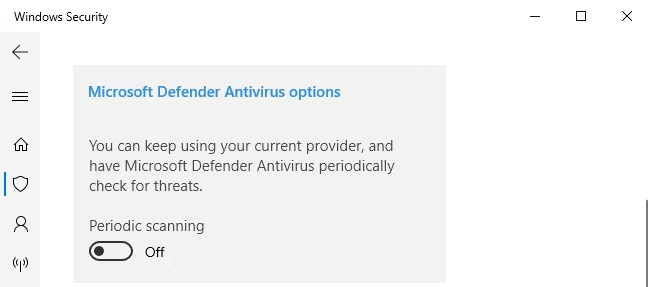What is Antimalware Service Executable: high CPU, disable

Microsoft Windows comes with a built-in antivirus – Microsoft Defender Antivirus. It performs a scan of your computer for malware from time to time and its background process is called Antimalware Service Executable. It uses a lot of CPU but helps to keep your PC safe. In this article, we explain in detail what is it and how it works.
What is the Antimalware Service Executable process?
The Antimalware Service Executable (its file name is MsMpEng.exe) process is Microsoft Defender's background tool that is responsible for scanning your files, folders, and programs for malware. It always runs in the background. Microsoft Defender (former Windows Defender) is in charge of your Windows computer safety: it is a built-in antivirus that performs all major security checks if you don't have any other antivirus installed, such as Malwarebytes, Kaspersky, etc.
You can check Microsoft Defender's scan history and adjust its settings by going to Settings > Update & Security > Windows Security > Open Windows Security.
Is Antimalware Service Executable a virus?
Antimalware Service Executable is part of the Microsoft Defender program, so it's not a virus but a part of the program that protects your computer from viruses. Moreover, there are no traces of viruses that pretend to be the Antimalware Service Executable process so far.
Why is Antimalware Service Executable using so much CPU?
Like any other antivirus, Microsoft Defender performs regular scans of your computer to find the malware and get rid of it. It also checks the files and programs you download and open. It often scans your computer in the background when you don't use it. It is completely normal that the scan uses a large amount of CPU and disk resources to keep your PC safe.
Can I disable Antimalware Service Executable?
You can disable the Microsoft Defender antivirus tool temporarily by going to Start > Virus & Threat Protection > Manage Settings > disable Real-Time Protection. This setting will temporarily disable the Antimalware Service Executable but it will reenable itself to protect your computer from viruses. And we don't recommend disabling it, since it is an essential antimalware tool that keeps your PC safe, especially if you don't have any other antivirus installed. If you use another antivirus, Microsoft Defender will probably disable itself automatically, and even though the process might run in the background, it won't use CPU or disk resources as much as before.
If you see that Microsoft Defender uses CPU when you have other antivirus installed, you can stop it by going to Virus & Threat Protection > Microsoft Defender Antivirus options. Here, switch the Periodic scanning off.


